- In the fifth week of serious border tensions between China and India, China released footage of a major military live-fire assault exercise in the Tibet Autonomous Region. Soldiers used flame-throwers, rocket-propelled grenades and heavy machine guns to strike bunkers and various types of heavy weapons, including mortars, self-propelled howitzers, multiple rocket launchers and anti-tank missiles in the display of fire-power, which also trialled a new type of tank.
- In addition, Chinese military sources confirmed the transport of what was described as “tens of thousands of tonnes” of military equipment, including army vehicles and troops to the Tibetan plateau in June.
The announcement on July 16 2017 of the People’s Liberation Army (PLA) drills came amid tensions between India and China over a disputed border area near the junction of Sikkim, Bhutan and Tibet known as Doklam (being referred to in Tibetan as Droglam, the nomads’ path).[1] On June 29, 2017, a statement by Bhutan’s Foreign Ministry said, “On 16th June 2017, the Chinese Army started constructing a motorable road from Dokola in the Doklam area” saying it had conveyed to the Chinese government that “the construction of the road inside Bhutanese territory is a direct violation of the agreements”.[2] The next day, on June 30, India’s Foreign Ministry issued a statement saying, “Indian personnel, who were present at the general area in Dokala, approached the Chinese construction party and urged them to desist from changing the status quo. These efforts continue”.[3] On July 18, the Chinese government issued a warning to India to withdraw its troops from the disputed area, to “avoid further escalation of the situation.”[4]
While the PLA did not specifically announce the timing of the live fire military exercise,[5] it appears to be consistent with China’s military strategy that includes legal warfare designed to manipulate strategies, defense policies, and perceptions of target audiences abroad.[6]
The militarization of the Tibetan plateau – backed by grass roots propaganda work and comprehensive surveillance – comes under the general rubric of ‘stability work’ as emphasized by China’s President and Party Secretary Xi Jinping. The latest display of military capacity also underlines a prominent political message that has been emphasized by Xi Jinping, which is that: “To rule the country, it is imperative to rule the frontiers; to rule the frontiers, stabilizing Tibet must be done first”.[7] Party officials connect political ‘stability’ in Tibet with the security of the entire PRC.[8] In Chinese political language, ‘stability’ is a coded reference to the need to crush any form of dissent and to ensure allegiance to the CCP authorities in order for the authorities to pursue their strategic and economic objectives on the plateau without impediment.
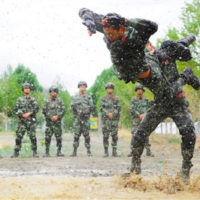
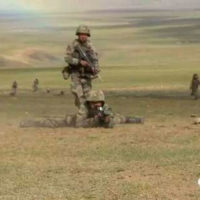
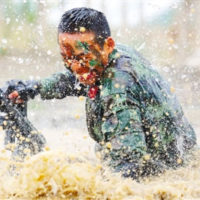
Military capability in the border areas is also being emphasized this year due to the 19th Communist Party Congress due to be held in the fall, at which Xi Jinping is expected to consolidate his power. A Party meeting in Qinghai last month was among those to emphasise this political imperative, stating that: “2017 is a key year to deepen the reform of national defence and armed forces, with a high sense of political responsibility and historical mission in the long-term.”[9]
The reports by the Chinese state media did not disclose the location of the live fire military exercises, except to say that the brigade responsible for frontline combat missions has long been stationed around the middle and lower reaches of the Brahmaputra (Tibetan: Yarlung Tsangpo; Chinese: Yarlung Zangbo) River.[10] The Brahmaputra flows into India from Arunachal Pradesh, which China claims as ‘south Tibet’, a cause of unresolved tensions between India and China. As the source of most of Asia’s major rivers, the water that flows from the Tibetan plateau is regarded as a strategic asset by the Chinese government, in the context of its ambitious objectives on Tibet set at the highest levels in Beijing.[11]
The damming of the Yarlung Tsangpo upstream has also been a source of tension between China and India, with both governments being criticized for “inviting calamity” by environmentalists for constructing dams at the meeting point of the youngest and most seismically unstable mountain ranges in the world.[12]
Given the terrain visible in the stills and footage, the exercises could have taken place in Chamdo (Chinese: Changdu) or Nagchu (Chinese: Naqu) in the Tibet Autonomous Region rather than closer to the border with Arunachal Pradesh in India.
Underlining the political importance of Tibet’s border and river source areas, the Chinese state media announced last week further[13] border troops training drills on a war footing in Lhokha (Chinese: Shannan) close to Lhasa in the Tibet Autonomous Region – linking them to the upcoming 19th Party Congress.
Border troops training ‘a gift to the 19th Party Congress’
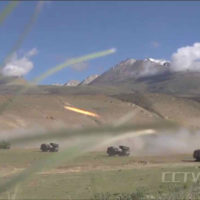
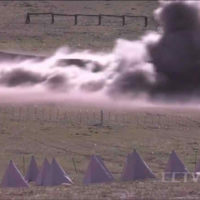
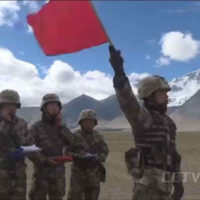
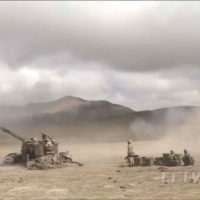
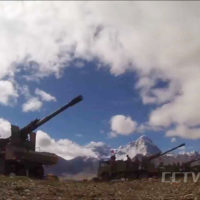
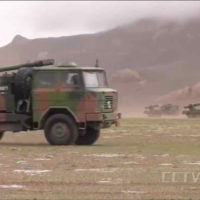
A Chinese state media report on July 14 stated that the Detachment of Tibet Public Security Frontier Corps launched a special exercise after three months of training called “Li Bing Ya Long” (Sharpening or Polishing the Army in Yarlung).[14] The article referred to: “Contests and competitions on subjects such as target shooting, off-road county cross, investigation, climbing, tactics, and catch-kill in combat.” The drills were aimed at: “further strengthening the officers and soldiers’ ability to adapt to the plateau’s climate and topographical circumstances in the border area, and also enhanced the capability of the officers and soldiers for actual combat.” It concluded by describing the training as: “A great gift to the 19th Congress of the Party!”
Separately, Tibet’s mobile communication agency conducted a drill on July 10 in Lhasa, capital of Tibet, where members of the agency practiced setting up a temporary mobile network to secure communications in an emergency, according to the Global Times on July 17 (2017).[15]
The news release from the PLA announcing the drill in the Tibet Autonomous Region talked of “two exercises” and that one of the exercise involved “scenarios such as rapid deployment, multi-unit joint strike and anti-aircraft defense”.[16] Qin Zhen, executive editor of Ordnance Knowledge magazine, was cited in the same article as saying that the recent exercises displayed the strong combat capability of the PLA’s plateau units.
China Central Television said that the 11-hour drill was conducted by one of China’s two plateau mountain brigades from the PLA’s Tibet military command. The Western Theatre Command of the PLA oversees the regions of Xinjiang and Tibet, and handles border issues with India.[17] Last year, the ranking of the Tibet Military Command was raised a level higher than its counterpart provincial-level military commands by putting it under the jurisdiction of the PLA. [18]
New details on combat capacity on plateau
[one_half]
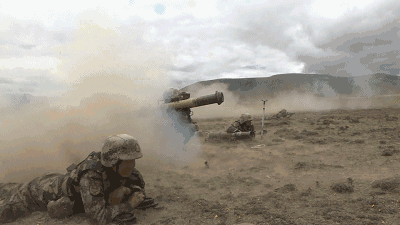
[/one_half]
[one_half_last]
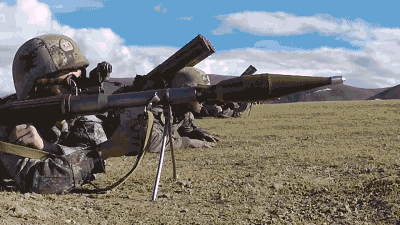
[/one_half_last]
Additional postings on a Chinese military website monitored by ICT over the past few days give intricate detail on weaponry and combat capacity on both the Tibetan plateau and on the Indian side of the Himalayas.[19]
One article referred to the new ‘light tank’ being tested by military in Tibet that is “specifically made for combat in the mountain areas”.[20] According to the same article, on June 20, “advanced transport aircraft” began to fly cargo and troops “to the western plateau region.”[21] One of the aircraft, the Yun-20, “can quickly transport personnel and materials to the much-needed areas directly from other areas which are behind the front-line, and heavy equipment such as armored vehicles, tanks and even armed helicopters can be transported to the front line as well.” The article stated: “The most important ability of Yun 20 is to be able to transport a large number of troops together with equipment and supplies to the key spots and weakly defended areas of the enemy, having a sudden and fatal strike to the enemy.”
Chinese commentators draw attention to the scale of its infrastructure construction and the ease of transporting troops and supplies from lower altitude bases to border areas. Wang Dehua, an expert on South Asia studies at the Shanghai Institutes for International Studies, was cited as saying that now, the military can “easily transport troops and supplies to the frontline, thanks to the much improved infrastructure including the Qinghai-Tibet railway and other new roads connecting the plateau to the rest part of China”.[22]
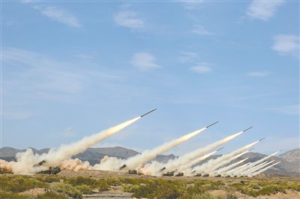
A live-fire military drill was also carried out in Xinjiang (East Turkestan) last week, according to a report by the PLA website www.81.cn on July 16 (2017). The report showed rockets being fired by the “long-range rocket unit” on July 13, in an exercise “to enhance the combat capability of the troops.”[23]
ICT has documented the presence of troops from Xinjiang (East Turkestan) in the border area of Ngari (Chinese: Ali), Tibet and a closer alignment of the regional authorities of Tibet and Xinjiang linked to intensified oppression and a ‘counter-terror’ drive imposed by Beijing.[24]
Footnotes:
[1] See Thubten Samphel, China’s great game: ‘Tibet occupation means strategic depth and control over Asia river waters’, July 14, 2017, India Today, http://indiatoday.intoday.in/story/china-great-game-doklam-tibet-manchu-china/1/1001957.html
[2] http://www.mfa.gov.bt/press-releases/press-release-272.html
[3] http://www.mea.gov.in/press-releases.htm?dtl/28572/Recent_Developments_in_Doklam_Area
[4] The comments by Foreign Ministry spokesperson Lu Kang during a regular press briefing came amid an intensifying border dispute between India and China. The disputed area is close to the “chicken’s neck,” a strategic corridor that serves as a vital artery between Delhi and its far northeastern states. An earlier video circulating on social media (https://www.youtube.com/watch?v=LyJmHMaF904) shows a skirmish between Indian and Chinese soldiers high up on the mountainous borders where Bhutan and Tibet meet.
[5] The Times of India quoted a source saying: “It was a routine annual exercise that took place near Lhasa in early-June, around 700-km from the border.” No further details were given, but the article downplayed the exercise, stating that: “All armies conduct exercises at frequent intervals. The PLA has been conducting such exercises in Tibet since 2009.” India TV News, July 20, 2017, http://www.indiatvnews.com/news/world-india-denies-chinese-media-s-claim-of-military-gear-mobilisation-in-northern-tibet-report-latest-breaking-news-today-392192
[6] In 2003, the Central Military Commission (CMC) approved the guiding conceptual umbrella for information operations for the People’s Liberation Army (PLA) – the “Three Warfares” (san zhong zhanfa). The concept is based on three mutually reinforcing strategies: (1) the coordinated use of strategic psychological operations; (2) overt and covert media manipulation; and (3) legal warfare designed to manipulate strategies, defense policies, and perceptions of target audiences abroad.
[7] For instance, on March 3, 2013, Xi Jinping joined a discussion with the Tibet delegation at the 12th National People’s Congress, and Xi Jinping emphasized this ‘strategic thought’, which in Chinese is: 2013年3月5日。习近平参加十二届全国人大一次会议西藏代表团审议 明确提出“治国必治边、治边先稳藏”的战略思想。西藏自治区成立50周年庆祝大会隆重举行
[8] Chairman of the Tibet Autonomous Region’s People’s Congress Pema Thinley (referred to as Padma Choling by Chinese media) underlined this approach on China’s National Day, October 1, in 2014 when he said: “Tibet’s stability is tied to national stability, and Tibet’s security is tied to national security.”[ Tibet Daily, October 3, 2014, http://epaper.chinatibetnews.com/xzrb/html/2014-10/03/content_572862.htm
[9] Chinese state media in Chinese, extract translated by ICT, June 10, 2017, http://epaper.tibet3.com/qhrb/html/2017-06/10/content_415429.htm
[10] Video of the exercises was posted across the Indian media, including at: http://www.hindustantimes.com/world-news/china-s-pla-moves-troops-lots-of-heavy-equipment-to-tibet-say-reports/story-eEd7wc33PTKtOgm91wi4oN.html
[11] The construction of hydropower dams in Tibet are aligned with the political objectives of “uniting the people” and allegiance to the Communist Party. (Tibet Daily, November 22, 2015, in Chinese).
[12] Prem Shankar Jha wrote in an article entitled Why India and China should leave the Yarlung Tsangpo alone: “Neither the Chinese nor the Indian government have made even a rudimentary assessment of the impact that gouging out billions of cubic metres of rock and earth to build dams, tunnels and roads, and store millions, in some cases billions, of cubic metres of water, will have on the stability of the earth’s crust in this region. Both governments know that the Himalayas have experienced the most powerful earthquakes on land in recorded history.” (China Dialogue, posted on March 5, 2014, https://www.chinadialogue.net/article/show/single/en/6753-Why-India-and-China-should-leave-the-Yarlung-Tsangpo-alone). Also see ICT report, Blue Gold from the Highest Plateau: Tibet’s water and global climate change, https://www.savetibet.org/new-report-reveals-global-significance-of-tibet/
[13] Chinese state media in Chinese, extracts translated into English by ICT, at: http://epaper.chinatibetnews.com/xzrb/html/2017-07/14/content_778659.htm
[14] Chinese state media in Chinese, extracts translated into English by ICT, at: http://epaper.chinatibetnews.com/xzrb/html/2017-07/14/content_778659.htm
[15] Global Times cited the Tibet-based news website xzxw.com for the information.
[16] Chinese state media in English, July 17, 2017, https://www.ecns.cn/military/2017/07-17/265588.shtml
[17] Jayadeva Ranade, a well-known Indian analyst who runs the Centre for China Analysis and Strategy and is a former Additional Secretary in the Cabinet Secretariat, Government of India, said in an article published on July 17 in the Indian media: “A factor in China deciding its future course of action will be the view of the PLA and its commanders in the PLA’s Western Theatre Command. The Doka La area is within the operational jurisdiction of the PLA’s Shigatse (Xigaze) Military Sub-District subordinate to the Western Theatre Command. The present Commander of the Western Theatre Command, 62-year old General Zhao Zongqi, is one of the few serving PLA Generals with battle experience and has over two decades of service in Tibet. Fang Jianguo, the incumbent PLA commander in Shigatse, similarly has a sterling record and promising career ahead. Both anticipate further promotions. They could view India stymying the road building as a setback to their operational capabilities and argue in favor of action against India.” (http://www.indrastra.com/2017/07/China-s-New-Assertiveness-Doka-La-Face-off-003-07-2017-0025.html). Also see updated report by the Hong Kong based South China Morning Post, July 16, 2017: http://www.scmp.com/news/china/diplomacy-defence/article/2103135/was-chinas-military-drill-tibet-really-just-exercise
[18] According to the Chinese state-run newspaper the Global Times, May 13, 2016, http://www.globaltimes.cn/content/982843.shtml. The newspaper reported: “China continues to strengthen its military presence in the autonomous region and aims to allow the military command to shoulder more combat assignments, analysts said.”
[19] For instance, http://mil.news.sina.com.cn/china/2017-07-17/doc-ifyiakwa4250226.shtml?cre=milpagepc&mod=f&loc=12&r=9&doct=0&rfunc=16 and http://mil.news.sina.com.cn/china/2017-07-19/doc-ifyiakwa4656888.shtml
[20] The tank’s main weapon is a 105-mm gun that is able to fire shells and guided missiles, according to the same sources.
[21] Chinese military website in Chinese, extracts translated by ICT: http://mil.news.sina.com.cn/china/2017-07-07/doc-ifyhwehx5321211.shtml
[22] Cited by India Today, July 19, 2017, http://www.msn.com/en-in/news/newsindia/now-china-moves-tonnes-of-military-equipment-to-tibet-should-india-be-scared/ar-AAoq71j?li=AAgges1
[23] Chinese state media in Chinese, http://www.81.cn/jfjbmap/content/2017-07/16/content_182384.htm
[24] ICT report, November 8, 2016, https://www.savetibet.org/ict-inside-tibet-news-and-analysis-of-emerging-developments-in-tibet/